
Michael Laithangbam is a senior writer & editor at ProProfs with over 12 years of experience in enterprise software and eLearning.
Learn about Our Editorial Process Author & Editor at ProProfs Updated: 28 Aug, 2024
“An organization’s ability to learn, and translate that learning into action rapidly, is the ultimate competitive advantage.”
– Jack Welch, former CEO of General Electric
This perspective underlines why internal assessments are vital for organizational growth.
Internal assessments are pretty identical to external assessments as they play a significant role in raising the standards of the learning process.
Assessments have always been considered a systematic way of collecting, reviewing, and using the information to identify existing knowledge gaps and provide a great learning experience.
But how significant are assessments really?
To put this into perspective, assessments help identify the performance of the candidates and uncover their capabilities to achieve long-term goals.
From teachers to employers, everyone needs assessments to validate candidates’ learning and determine their learning curve.
In addition, we also know that assessments are ongoing , cumulative , and constructive , which gives them a ton of flexibility and enough reasons to conduct them on a regular basis. The importance of assessments has grown quite significantly in the past few years, especially in an organizational setting.
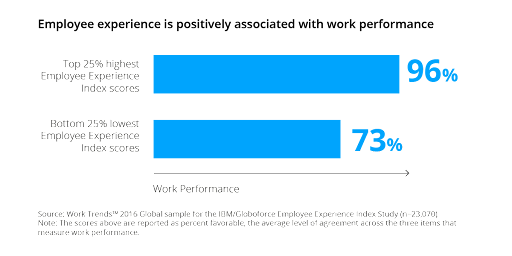
In fact, data from IBM suggests that companies that conduct regular assessments offer a much better employee experience. It results in three times the return on assets and almost two times the return on sales.
There is no doubt that assessments are an integral part of an organization’s strategic plan, be it institutional or corporate.
This blog will closely look at what an internal assessment is, internal assessment methods, advantages, tips to conduct internal assessment, and the main differences between internal assessments and external assessments.
First, let’s start with the basics.
As the name suggests, internal assessments are those carried out within the organization or an institution and are also graded by them without involving any external parties.
The purpose of internal assessment is to judge a candidate’s credibility and knowledge concerning a particular subject or a discipline.
These assessments play an important role in every organization’s hiring process. They help the HR personnel assess the abilities, skills, and psychological balance of every potential candidate to find the right fit for the organization.
But that’s not all.
Companies save thousands of dollars every year by conducting internal assessments and avoiding bad hires that can end up costing them big time.
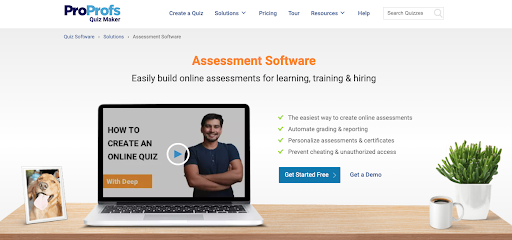
The good thing about internal assessments is that they can easily be created using an online quiz making tool. Such tools support automatic grading and reporting, which simplifies the process of conducting assessments. In addition to that, these provide a range of security measures to prevent cheating and ensure fairness in assessments.
Here are some examples of internal assessment:

Then the employees can participate in self-development programs and take corrective actions to work on their weaknesses.
It also helps employers match employees with more relevant job projects and assignments.
The stepping stone to determining the training and development needs of the employees is assessing the strengths and weaknesses of the employees.
Once the strengths and weaknesses have been identified, the internal assessment will point out the type of training needed by the employees based on the areas in which they did not perform well.
For training needs analysis, the assessments also uncover crucial insights about the development programs that can benefit both employers and employees.
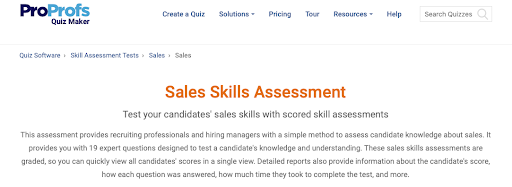
For instance, you can give Sales training to employees who did not score well in the Sales Skill Assessment tests and find it difficult to close sales funnels. You can even create blogs and documentation to make training easier and more accessible.
Related Read – To learn more about training and development, have a look at What is an Internal Training Program?
Every internal evaluation has performance goals and standards that employees should meet as per the employer’s expectations.
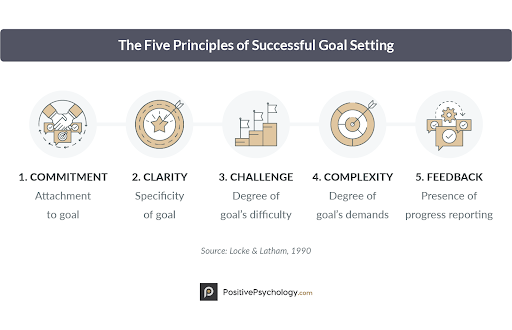
Assessments help employers identify employees who are meeting the expectations and the ones that are falling short of them. Once the identification is made, the employers can provide all the necessary tools to ramp up their performance.
Arguably the best way of boosting employee morale and performance is by recognizing and rewarding employees for their contributions.
Internal assessments allow employers to evaluate the performance of employees and recognize them for their hard work and commitment.
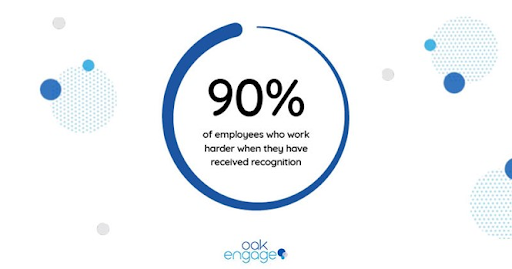
In addition to the monetary rewards, employers can also identify high-performing employees and assign them additional roles and responsibilities.
Positively reinforcing your employees is also quite similar to recognizing their hard work and rewarding them.
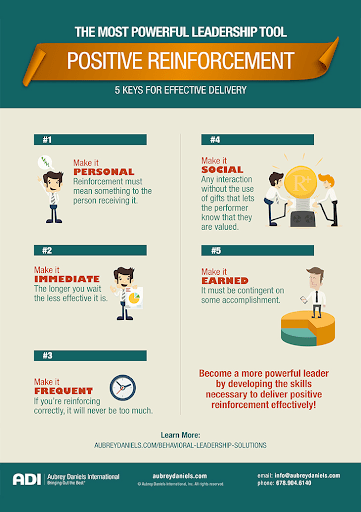
Internal evaluations will help you identify the efforts put in by your employees, and you can radiate some positive energy towards them for executing tasks successfully. Studies also show that positive reinforcement also motivates the employees and boosts workplace morale in the long run.
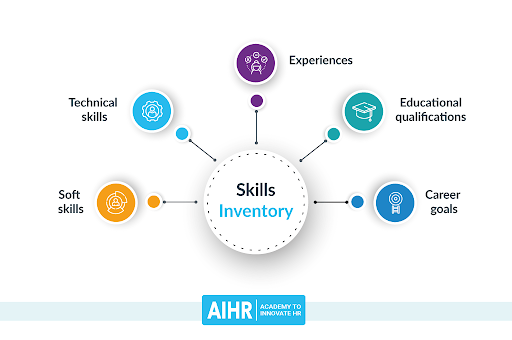
Organizations use this database to get an accurate overview of the company’s pool of current skills and also to identify if the present skillset is enough to achieve the long-term organizational goals.
Mentoring is another one of many popular internal assessment systems where a more experienced employee is assigned as a mentor to a junior employee to promote career development for both of them.
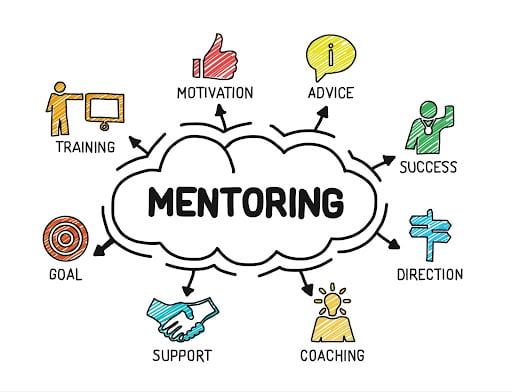
The mentor assesses their mentee, and based on the results, they provide guidance and direction towards professional and personal development.
Performance review is conducted by the employee’s manager or supervisor, mostly at the end of each year and sometimes even mid year, with the aim to provide performance feedback to the employee.
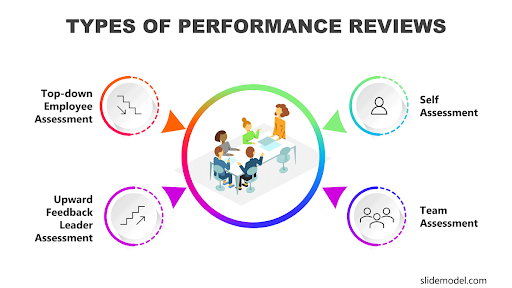
There are multiple types of performance reviews, including:
The managers observe and assess employees for a complete year, and when the year ends, they provide feedback on their overall performance and contribution to the company.
Multisource assessments are also called 360-degree assessments , and it involves a supervisor, along with other subordinates and colleagues who are familiar with the employee’s job, to assess them.
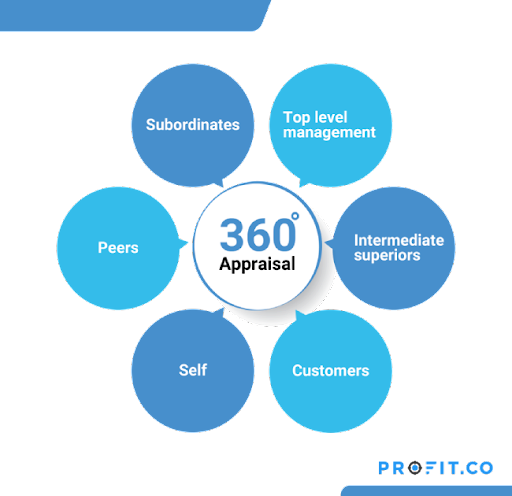
This internal assessment system helps you get multiple perspectives of an employee and uncovers how different people of the organization perceive that employee’s presence.
An assessment center is another way of assessing an employee’s competencies and skills internally by putting them through a series of simulations and tests that mimic the challenges of the job they apply for.
This is a little more complex way of assessing the candidates but also quite effective when it comes to testing the suitability of the employees for a specific job role.
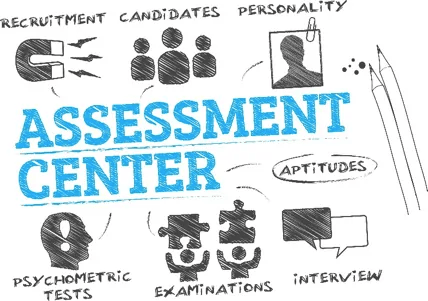
Those are the different methods of conducting internal assessments. Now it’s time to look at how internal assessments can be advantageous to different parties.
Internal assessments are used not just to hire the right candidates for the job but also to evaluate their performance and give out performance appraisals.
By conducting these assessments, businesses get a much clearer picture of their manpower and the efforts that they will require to achieve long-term business goals.
Here are some of the advantages:
Internal assessment tests are not just aimed at gauging the performance of employees but also improving it. Assessments factor in all the crucial elements like social process and technology to analyze and evaluate opportunities.
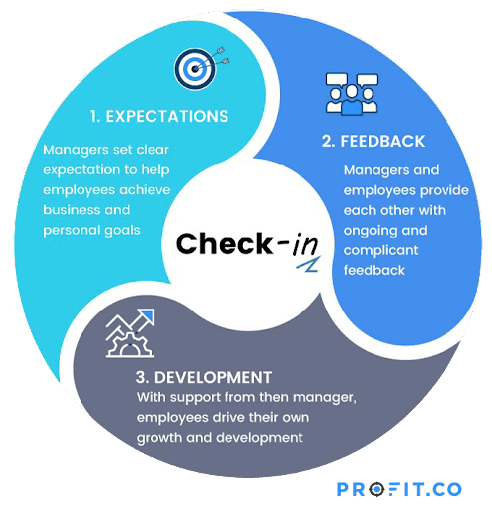
Supervisors can also use these assessments to help employees understand their job better by creating the assessments in such a way that they mimic on-the-job scenarios, which helps employees perform better.
Quiz Maker is one such employee assessment tool that employers can use to create customized assessment tests that replicate on-the-job scenarios for a more realistic evaluation process.
It offers more than 100 professionally designed templates and over 100,000 questions to make assessment creation more flexible and seamless. It even offers tons of security features that prevent cheating and unauthorized access to ensure fairness in assessments.
You can use internal assessments to evaluate the performance of employees and then screen out the organization’s top performers. This is done because there are always employees who go above and beyond to make a difference.
Screening the best performers will enable you to recognize and reward those employees and keep them motivated to perform better.
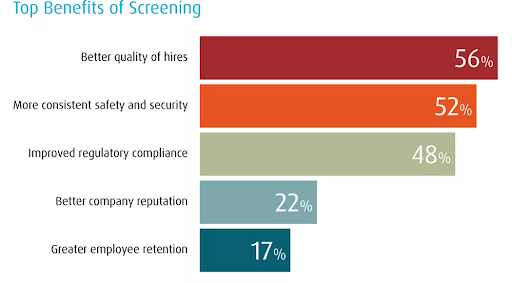
Assessments are essential in making sure that employees perform the job based on their skillset.

These assessments uncover a lot of different insights about employees, such as effectiveness, role-specific preferences, motivating factors , and strength and weak areas.
Employers can then use these insights to find a role that aligns perfectly with their employees’ skill sets and also works in favor of their strengths.
Face-to-face interviews paint a really good picture of candidates and provide a solid impression of them to the interviewer.
But do interviews tell you everything about a candidate?
No, because someone can be really good at communicating during the interview and still perform terribly in all other job-related activities or vice versa. This is why internal assessments help interviewers get an overall picture of the candidates by assessing them in all domains and avoid bad hires by relying solely on the interviews.
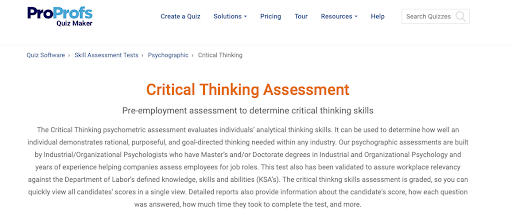
For instance, psychographic tests like Critical Thinking Assessment can be used alongside face-to-face interviews to ensure that the candidate is not just a good communicator but also a good problem solver.
Successful onboarding helps new employees get a hold of things more quickly and even improves retention rates in the long run. Onboarding involves a lot of different elements, and assessments should be one of the most tools for it.
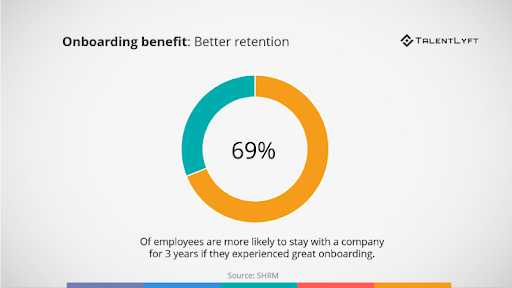
You can gather all the insights about a candidate from the hiring process and use those insights to customize the onboarding process by adjusting your approach through different learning styles and modules.
This will help you easily determine the strengths and weaknesses of the candidates, along with setting goals based on different work styles.
Internal assessment tests and performance evaluations will also uncover why some of your employees are not performing well and falling short of the expectations. This case is often due to insufficient or poor quality of training.
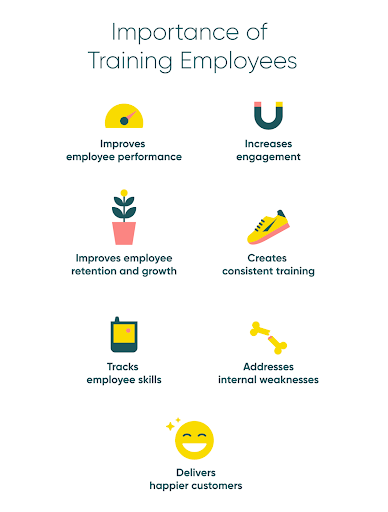
Once you uncover the areas where employees are not performing well, new training modules can be developed that focus on those areas and improve their performance and self-esteem. Neglecting proper employee training can create major bottlenecks in achieving organizational goals.
Here, employee assessment tests can be conducted to test their skills and knowledge. Employers can create customized training modules based on the results to help employees improve their skills.
This doesn’t end here because internal assessments offer tons of other advantages. Moving forward, let’s go through some useful tips that will help you conduct internal assessments with ease.
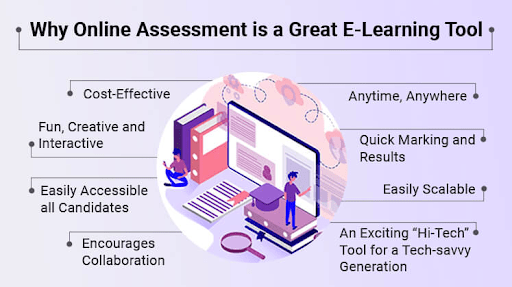
However, this does not mean that the integrity of traditional physical examsis compromised. They are extremely secure and offer a level playing field to all candidates.
In addition, the modernization also helps speed up the process and guarantee almost 100% accuracy in evaluation, which comes as a result of automation and the AI engine working in the background. There’s also the option of adding activation functions to the neural network which helps the AI model use the complex data more effectively.
A tool like ProProfs Quiz Maker is perfect for this kind of task. It offers tons of built-in assessment templates with 100+ customizations, making assessment creation easy and flexible at the same time. Also, the automatic grading and reporting system make a quick work of the analysis and eliminates any bias.
Research shows that candidates perform much better when the goals and objectives of an assessment are laid out clearly.
Let everyone know when the assessments are going to be conducted and what those assessments will measure. Communicate it to your candidates or employees so that they get enough time to prepare for them.
A lucid understanding of what the assessments can be about and the expected outcomes from the assessment takers will help assessment creators bring out the intelligent side and ensure that there is no untapped potential.
Assessment goals should cover both broad and specific areas of the evaluation process. It would help organizations create individuals with professional , technical , and practical skills and make them socially responsible.
Ambitious goals will help organizations hire the best of the bunch and ensure that their workforce is equipped with all the necessary skills and knowledge.

You should publicly announce these goals to all the stakeholders, which would help send out a positive message and positively reinforce the employees.
Finally, the departments should strive to keep the organizational goals in mind and create individual courses and assessments to direct the employees in fulfilling the organization’s ambitions.
Assessments cannot be created in isolation. While creating assessments, you need to ensure that the tools and metrics used in the assessment are valid and reliable.
Your assessments might completely miss the mark and fail to measure candidates on important criteria without proper review.
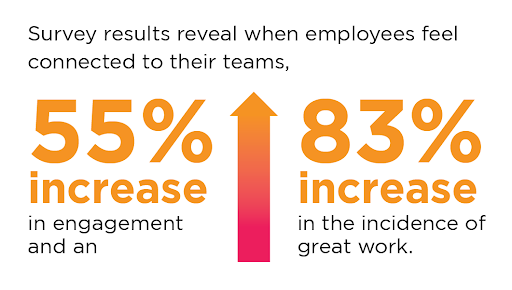
For this, you can invite a group of people, including your peers, subordinates, and supervisors, who can give you multiple perspectives on your assessments and help you determine whether your assessments are truly measuring what they are supposed to.
Conducting internal assessment tests is great, but conducting them at regular intervals is even better. Assessments are not just limited to hiring the right people; they are also quite crucial when it comes to evaluating their knowledge and performance.
This is why organizations should put policies and procedures in place to define how frequently the assessments will be conducted.
Conducting assessments twice or thrice a year will help organizations stay up to speed with the latest developments with their employees. It will also be beneficial in setting and updating long-term institutional goals based on the data collected.
Also, you should take contextual factors like demographics and other characteristics into consideration for a better understanding of the results.
These are some of the most common and effective tips that you can easily get started with. Now let’s get down to business and learn how to create an online assessment.

Step 3- In the next window, click “ Assessment library ” from the template section, choose the most suitable one from the given categories, and click “ view .”
Step 4- The assessment window will now open. Click “ Use this assessmen t” to get started with it.
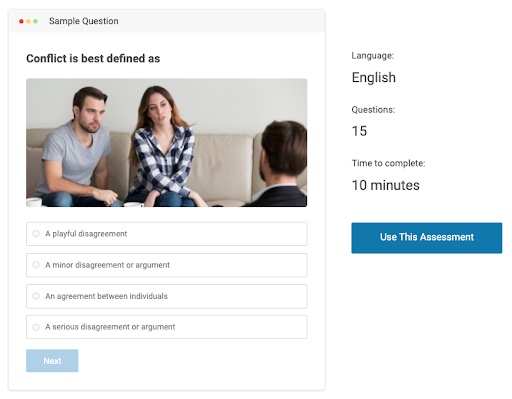
Step 5- After clicking, edit your assessment questions and the overall layout however you want, and then click “ Save .” Your assessment will automatically be saved on your dashboard.
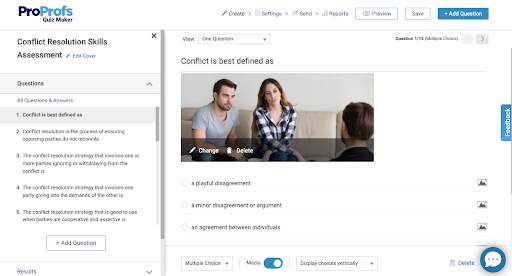
The second method of creating assessments is from scratch. This process might be a little detailed and time-consuming, but it sure is fun, even more so if you know what you’re doing.
Step 1- Go to the dashboard and click “ Create a quiz “
Step 2- In the next window, you get an option to choose between a “ scored ” or “ personality ” quiz. Click the “ scored ” quiz option to proceed.
Step 3- When the template window appears, click “ Create from scratch .”

Step 4- This leads to thequiz editor, and you can start by selecting the question types, adding questions, and customizing the layout.
Step 5- Add automatic grading and scoring.
Step 6- Configure the assessment setting.
Creating assessments is simple when you’re using the right tool, and if you have a knack for creativity, the assessments you create can be a lot more appealing.
Now that you know how to create assessments, let’s finally look at how to choose the best assessment tool.
Watch: How to Create an Assessment Online
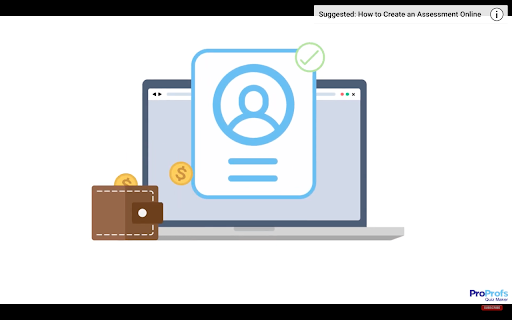
To sum things up, assessments are a must for employee hiring and training evaluations. Just remember to align your internal and external evaluations to find the perfect candidate for your organization and train them properly by understajding their knowledge gaps.
Now that you have the key to conducting assessments successfully, all you have to do is pick the right assessment tool and get started.
FREE. All Features. FOREVER!
Try our Forever FREE account with all premium features!